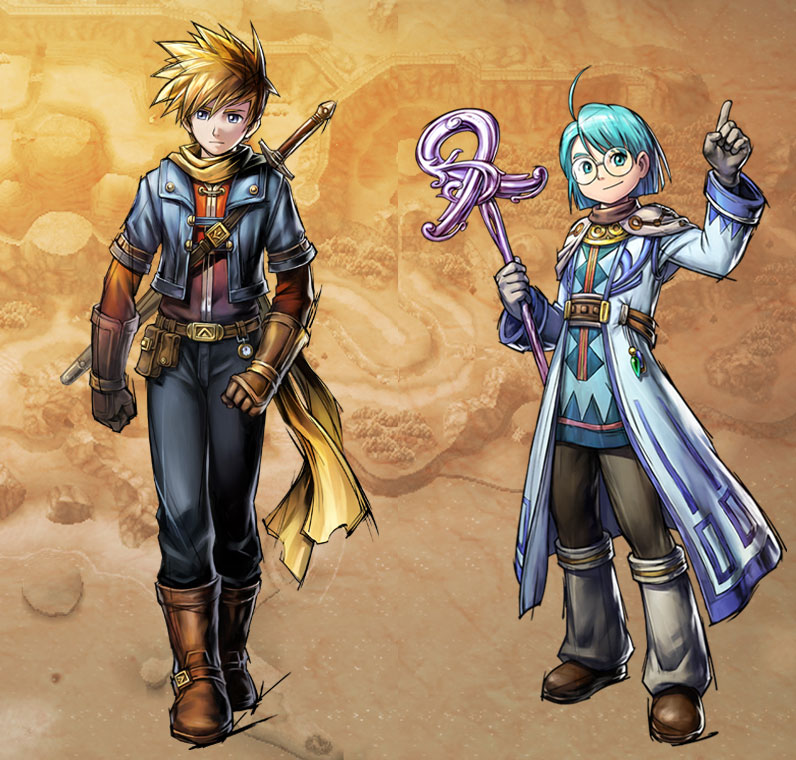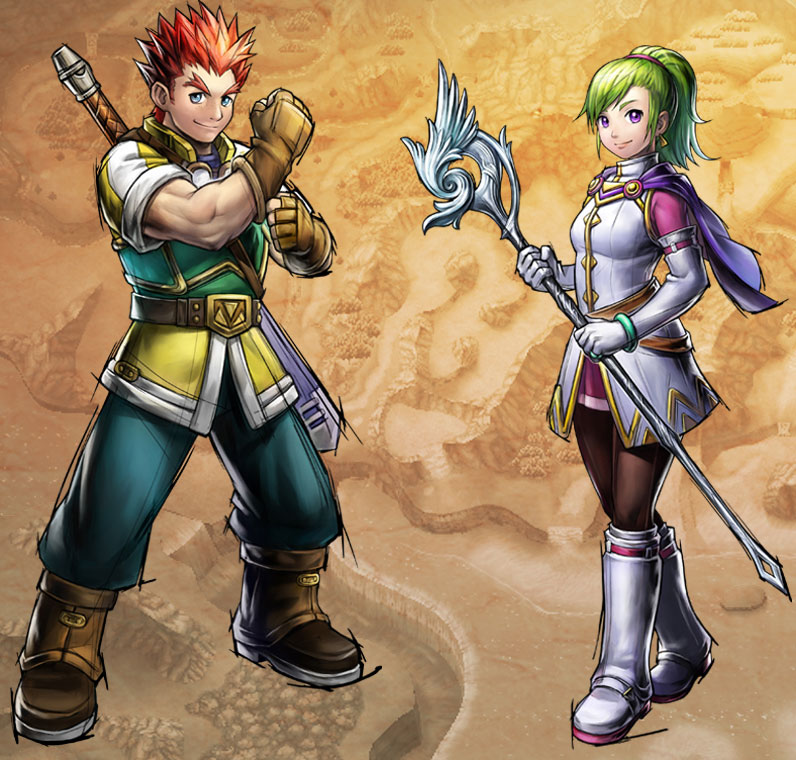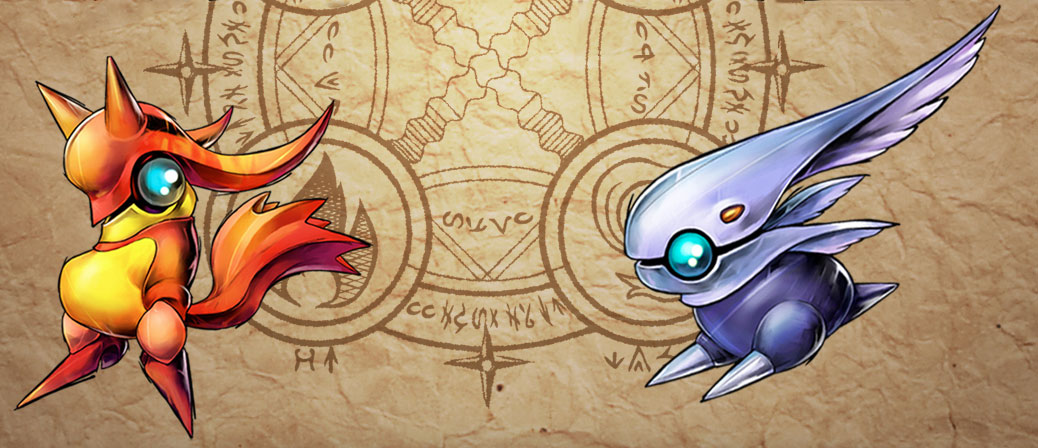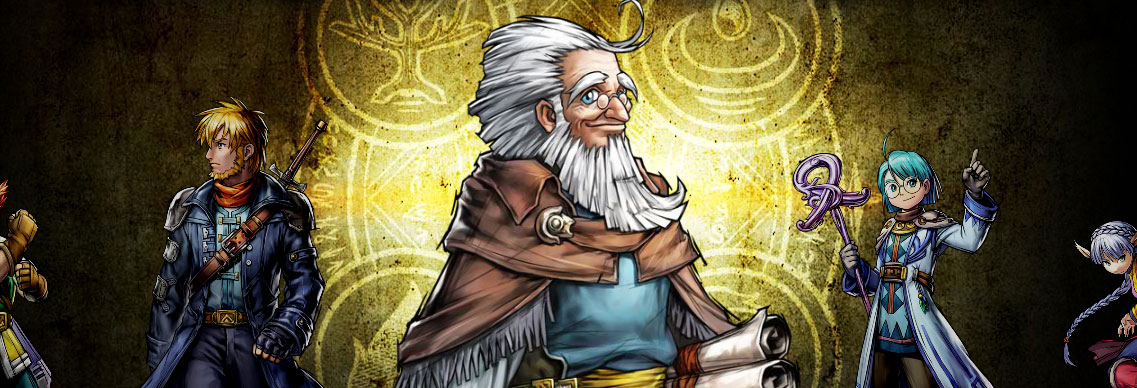When many think back to the Gameboy Advance days, two RPGs will come up frequently as being favorites: Golden Sun and Golden Sun: The Lost Age from Camalot Software, makers of some of the best Mario sports titles. These two games were tailor made for the GBA, and offered an interesting story that you actually had to play both games to fully see. In 2010, Camalot brought us back to Weyard with Golden Sun: Dark Dawn. Does it live up to the standards set by its older brothers, or should you look elsewhere for your portable RPG fix?


A Thirty Year Tale
The populace of the world of Weyard once lived in harmony with four magical elements – Venus, Mars, Mercury, and Jupiter. Great civilizations were built by adepts who could wield the power of earth, fire, water, and wind. Like anything good, this peace did not last forever, and war broke out among the people. As a result, the use of magic, or Alchemy as it is termed, was locked up and forbidden from use. Hundreds of years pass, and only a handful of people – called Adepts – in the world are able to use Alchemy, the majority of whom live in a town at the base of the volcano where Alchemy was sealed away. Because someone is always greedy, the seal was broken, and the means of restoring Alchemy were stolen.
As luck would have it, a group of young Adepts took it upon themselves to pursue the evil ones who plan to resurrect Alchemy for all. If Alchemy returned, the world would again erupt into chaos. Though their intentions were valiant, this group, later called The Warriors of Vale, did not stop Alchemy from returning, and the Golden Sun event occurred. This is the very truncated summary of the first two Golden Sun titles.
Thirty years later, the world seemed to have settled. The return of Alchemy actually did not rip the land asunder, but it did change the geography and nature of its residents. The story of Dark Dawn begins on a much less important set of circumstances. The children of two of the Warriors of Vale, Matthew and Tyrell, are living peacefully with their fathers on Mount Aleph. Tyrell, always the hothead, takes off in a flying machine and crashes it in the nearby woods. Needing to be saved, Matthew, friend Karis, and their parents go looking for Tyrell. He is ok, but the machine is broken and needs a Roc feather. Matthew, Karis, and Tyrell set off on their first adventure to retrieve the feather. Little do they know, however, that they will soon run into remnants from their parents’ past, and they will be thrust into world altering circumstances themselves.
On a New System
Nine years ago, when the last Golden Sun title was released, the DS was just a thing that would soon be made fun of for having two screens. With its transition to the DS, Dark Dawn had the ability to use polygons and 3D environments instead of just sprites. While the world is still colorful, bright, and has the same feel as the first two games, I was actually a bit torn. By being 3D, the game is able to have interesting camera angles that swoop and follow, and environments can shift and change based on things your characters do. But because I am an old curmudgeon, sometimes I would wonder, as I watched a polygonal character with their squarish, block hands make the same movement over and over, if a nice sprite couldn’t have done a better job. Overall, the game looks pretty great, and I was impressed with some of the finer touches (like a nice gaussian blur on the pause screen, for example).
[youtube http://www.youtube.com/watch?v=Pf_vwR80hqI&w=800]
In battle, everything is better. The first two titles in the series had a pseudo, fake 3D fighting dynamic that looked pretty good for its time. Now that things can be in a 3D space, the camera is free to spin and get in on the action when spells or special attacks are unleashed. Of note are the multiple summons, which all look really great (and all can be sped up, suck on that FFVIII).
Beyond just graphics, the DS’s top screen is used primarily for a very welcome map, and it can be toggled to show which djinni are currently not set to characters (more on that in a bit). Touch functionality doesn’t really come in to play, and it doesn’t really have to. There are optional touch controls for basically everything, but mostly you’ll just use the buttons unless you need to target a specific thing on the screen with magic. That doesn’t really happen all too often, to be honest.


Push It. Push It Real Good.
What hasn’t changed in the jump to the DS is gameplay. Being a game with classic RPG roots, this is not really surprising. Press A to do everything, and press B sometimes when you want to cancel. It is tried and true, and no one is complaining.
What was unique to Golden Sun, using magic (or psynergy as it’s called in the game) outside of battle to make paths or move obstacles, returns, but, unfortunately, after two games of this mechanic, it is getting somewhat stale. Cues in the environment point you to the exact type of psynergy you need to use, and once you remember that you can freeze that puddle or grow that plant, it becomes rather rote. That’s not to say there no good puzzles that involve psynergy, because there are. Some puzzles that traverse multiple floors end up being fairly rewarding, but a majority of the psynergy usage comes in the form of a 1:1 payoff: for example, I have to move a block to make a path and that’s the whole puzzle. In fact, pushing blocks around will be an activity you do a lot, so I hope you are ready.
I also got the feeling that the developers had a hard time coming up with good, unique psynergy for all of the playable characters after you get passed fire, earth, wind, and water. One example is Slap Psynergy, which sounds like what it does. One of the characters just slaps things, and apparently the ancients made doorways with giant faces on them, and the only way to enter is to slap their giant red clown noses. This same character has Sniff Psynergy, which picks up on unseen scent trails, but it is sadly hardly used.
Also returning are the Djinni, or little magical creatures imbued with psynergy that your party will come across throughout the game. Once found or defeated, the Djinn will join your party and become “Set” to a character. This will change their stats and also give them differing spells based on what kinds of other Djinn – Mars, Venus, Jupiter, Mercury – the character has with them. Matthew, for example, is a Venus adept and has earthy spells, but if you set a few Mercury or Jupiter Djinni to him, his spells will mix and change towards those persuasions.
In battle, the Djinni bring even more bonuses, and they are directly tied to summons. Each of them has a special power when used in battle, and once used, they will go into a resting state. To summon mega beasts to help you fight, you will need a certain number of used/resting Djinni. For example, you might need four Mars Djinn to summon Meteor, so you will have to use four Mars Djinn in battle or have some set aside before entering battle. The drawback here, or: The Strategy, is making sure your characters are balancing their Djinn usage. When one is used, its stat bonuses are taken away while it rests, so if you have a character that uses all of their Djinn, they probably have about half the HP than they did a little while ago, making them more susceptible to, you know, death.

I Wanna Hold Your Hand
Probably the only real downside to the game is that it is far too easy. The biggest challenge is mostly just finding the next town to go to. Once you learn the visual cues for which psynergy affects what, the majority of the puzzles in the game are just a matter of doing them rather than a matter of thinking. And if you do end up having trouble, one character that joins your party has the ability to show which psynergy should be used in a given area.
Fighting, generally, is also pretty simple. Only during boss battles will you really have to worry about utilizing Djinn, and only when a random battle pops up where there are multiple enemies will you have to really rely on magic. Most of the normal battles in the game can be won by simply hitting A until everyone goes through their physical attack once or twice. All of the weapons in the game have special abilities, too, and most have a high proc rate of these abilities, so at least once during a turn someone in your party will probably use a special ability that’ll hit like a ton of bricks. These abilities are really great to watch (one of the later ones summons two dragons that deal super high damage), but they help turn normal battles into a grind rather than a pleasure. And that is too bad, because all of the fighting mechanics in the game – the Djinni and summons in particular – are really cool and they look great.
Spoiler Alert: This isn’t a huge spoiler, but I guess some might get mad: On the topic of difficultly, really the only boss that will be really challenging is the very last one and a few subsequent bosses you can fight after the fact. Up until then, buff your party a little and have someone who can heal the whole party, and it’s cake.
So is It Golden or Dull?
I certainly walked away positively from Golden Sun: Dark Dawn, but I don’t know how heavily that is because I had a vested interest from the story of the first two. It is definitely not a bad game, however some of the mechanics do feel a little rusty after all these years, and some of the new psynergy introduced just seems silly. It’s still a quality title, and if you are looking for a pretty solid RPG to take with you, this one is not bad. If you had a Gameboy Advance in your pocket, though, I would suggest playing the first two instead. Their stories are better.